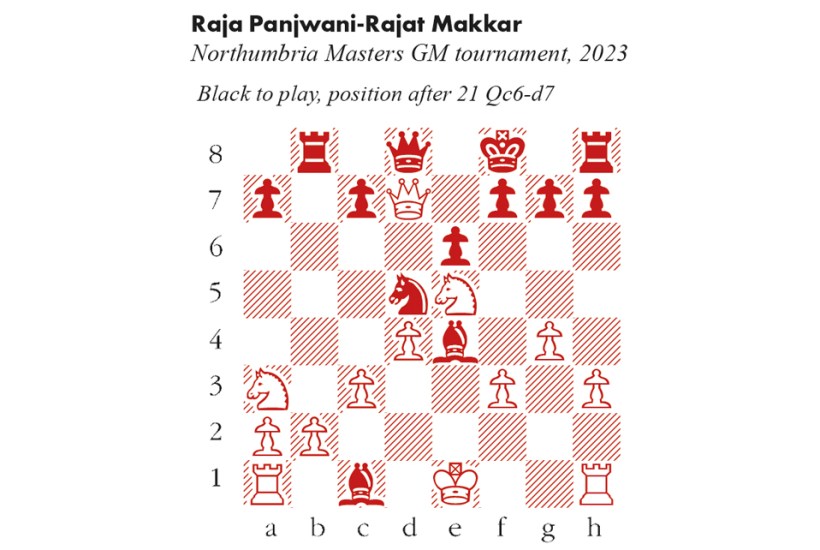‘How do you become a grandmaster?’
‘You must climb the mountain, and defeat the opponent at the top.’
Alas, the answer is not nearly so succinct, and when I get asked the question, I remind myself to spare the finer details. The gist is that you must outperform an ‘average’ grandmaster over the course of an event of around ten classical games. Each time you clear that bar you earn a ‘norm’, and racking up three norms earns you the title. There is no limit on the number of grandmasters in the world, and since their introduction in 1950, a couple of thousand players have attained that level.
By definition, achieving a norm involves surpassing one’s current abilities, which are measured with great precision by the international rating system. As such, it feels far more daunting than passing a test, and countless players have known the frustration of being just one good game away from a norm, only to wilt under pressure in the final game. Titles are highly prized, and even players on the cusp of achieving them may spend years in pursuit of their norms.
One difficulty is that an unfortunate pairing in a typical open event, particularly against an opponent who is rated too low, can significantly hamper your chances. With that in mind, some tournaments are designed to cater to the needs of norm seekers. Such events are played between a select group of players, who can calculate upfront the score they will need to achieve a norm.
The Northumbria Masters, held at the end of August, had traditional sections organised by rating bands, but also two invitational tournaments for those pursuing grandmaster norms or international master norms (the title below grandmaster), each with a dozen players.
These turned out to be an extraordinary success, with six young players achieving international master (IM) norms – Rajat Makkar, Krzysztof Raczek, Borna Derakhshani, Frederick Waldhausen Gordon, Edvin Trost, and Tanmay Chopra. Makkar, a 16-year-old who attends Hampton School, performed so exceptionally that he earned a grandmaster norm as well, even though he has yet to be awarded the lower IM title. He concluded the following game with a splendid firework display.
Raja Panjwani-Rajat Makkar
Northumbria Masters GM tournament, 2023
1 Nf3 d5 2 g3 Nc6 3 d4 Bf5 4 Bg2 Nb4 5 Na3 e6 6 c3 Nc6 The knight sally to b4 was more sophisticated than it looks. White has played c3 and Na3 ‘for free’ but the Na3 is misplaced. 7 Qb3 Rb8 8 Nh4 Bg4 9 h3 Bh5 10 e4 dxe4 11 Bxe4 Be7 12 Qb5 This ambitious move wins a pawn, but White’s light-squared bishop will be missed. Nf6 13 Bxc6+ bxc6 14 Qxc6+ Kf8 15 g4 Nd5 Uncovering an attack on the Nh4 ensures that White must compromise his pawn structure if he wishes to eliminate the Bh5. 16 Nf3 16 Nc4 Bxh4 17 gxh5 Qf6 18 Rh2 is hard to assess, but White can be happy that Black’s bishop can no longer cause trouble on the light squares. Bg6 17 Ne5 Be4 18 f3 Risky as it appears, 18 O-O was a better choice, though after 18…Nf6 19 Qa4 Ba8, preparing threats with Qd8-d5, I suspect Black has an easier game. Bh4+ 19 Kd2 Bg5+ 20 Ke1 Bxc1 21 Qd7 (see diagram) The threat of mate on f7 is a good try to complicate. No good was 21 fxe4 Qh4+ 22 Kd1 Qf2! wins, e.g. 23 Kxc1 Qxb2+ 24 Kd1 Nxc3+ 25 Ke1 Qe2# Qh4+ 22 Kd1 22 Kf1 Ne3+ and mate follows soon. Bxf3+ 23 Nxf3 Qf2! wins as before. 23 Kxc1 Qg5+ 24 Kc2 Be4+ 25 Kd1 Ne3+ 26 Ke1 Qh4+ 27 Ke2 Rxb2+ 28 Kxe3 Qg3+ 29 Kxe4 Re2 mate
Got something to add? Join the discussion and comment below.
Get 10 issues for just $10
Subscribe to The Spectator Australia today for the next 10 magazine issues, plus full online access, for just $10.
You might disagree with half of it, but you’ll enjoy reading all of it. Try your first month for free, then just $2 a week for the remainder of your first year.








Comments
Don't miss out
Join the conversation with other Spectator Australia readers. Subscribe to leave a comment.
SUBSCRIBEAlready a subscriber? Log in